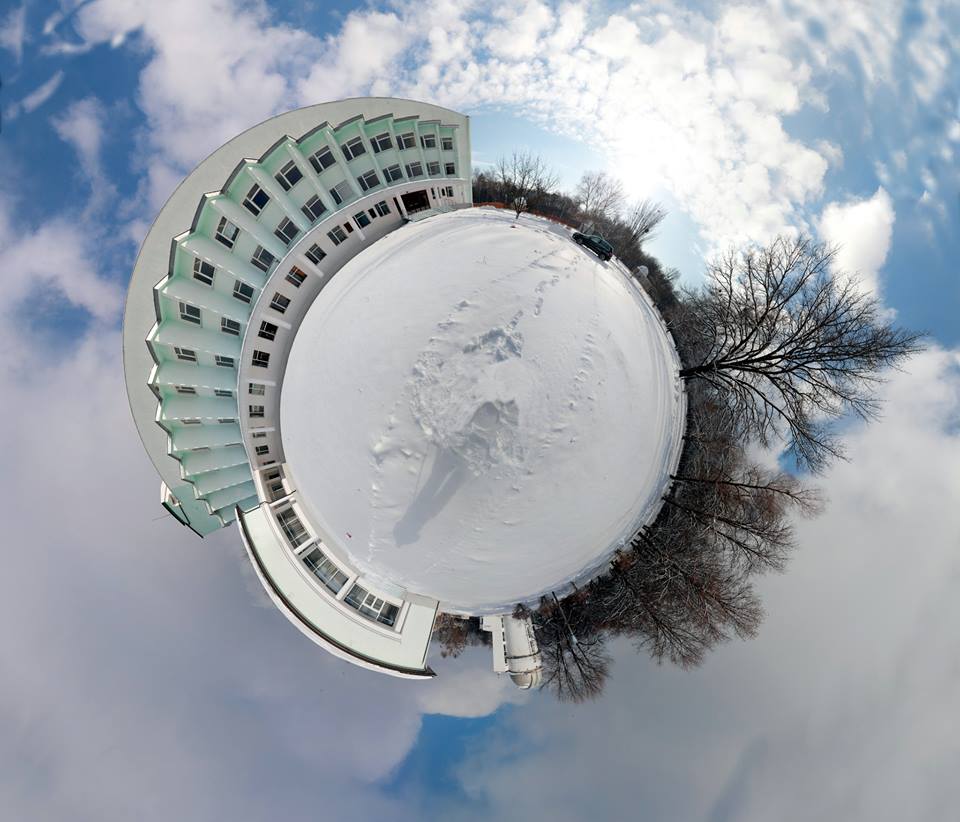Astronomic&Space Information and Computing Center
Astronomic&Space Information and Computing Center
The computing laboratory, as part of the Fundamental Astrometry department, was founded in 1965. The head of the laboratory was Dr.Sci Duma D.P. Subsequently the computing laboratory began to deal with measuring devices and was renamed as the Computing and Measuring Center. The head of the Center Dr.Sci Taradiy V.K. established the structure of the Center with the positions for qualified young specialists in programming and electronics engineering. The Astro/Space Information and Computing Center was founded in 1994 on the basis of the Computing and Measuring Center. The head of the ASICC became Dr.Sci. Berczik P.P.
The basic tasks of the Center are: information support of scientific researches of MAO; all kinds of information services providing; MAO-worldwide information exchange support; MAO computing equipment/facilities maintenance; GRID-cluster services.
The ASICC maintains the Observatory's local network of about 200 personal computers.
The Department Staff.
| Veles Oleksandr | acting Head of ICCASS, senior researcher | PhD | veles(at)mao.kiev.ua | room 117, tel. 7-00 |
| Pakuliak Ludmila | senior researcher | PhD | pakuliak(at)mao.kiev.ua | room 220, tel. 3-46 |
| Bulba Tamara | lead.engineer | tamara(at)mao.kiev.ua | room 231, tel. 3-05 | |
| Lobortas Valentin | lead.engineer | lobortas(at)mao.kiev.ua | room 231, tel. 3-05 | |
| Vedenicheva Irina | lead.engineer | iv(at)mao.kiev.ua | room 231, tel. 3-05 | |
| Zolotukhina Anastasia | junior researcher | nastya(at)mao.kiev.ua | room 218, tel. 3-32 | |
| Parusimov Grigoriy | engineer I class | parus(at)mao.kiev.ua | room 231, tel. 3-05 | |
| Sobolenko Margarita | engineer I class | sobolenko(at)mao.kiev.ua | room 116, tel. 3-47 | |
| Ivanov Daniel | engineer I class | ivanovdd(at)mao.kiev.ua | room 116, tel. 3-47 |
Scientific and technical group tasks are: programming and technical support of MAO scientific researches, MAO-worldwide information exchange providing, the Observatory computing equipment maintenance.

Local network of MAO NANU. Local network of MAO NANU provides information transferring with speed limit up to 1GBps. Access to the cluster facilities also use 1GBps channel. The UARNET company provides MAO NANU Internet access at present time. The Internet channel capacity increased up to 10GBps since 2012.
SERVERS

MAOLING. CPU 3.4 GHz, 3 GB RAM, 750 GB.
The main MAO server hosts MAO website, ftp-server, the gateway to the MAO local network. This server provides the access to the user's local data from any computer both from the local network and from the outside. LDAP- and DNS- servers are running on MAOLING as well.

OBERON. 2х2 GHz, 16 GB RAM, 1.5 TB.
The OBERON is used for various computational tasks due to its performance. The mirror of the NASA Astrophysics Data System is located on this PC as well.

JANUS / MAIL. 3 GHz, 3 GB RAM, 320 GB. Mail-server based on ZIMBRA software; provides the access to personal MAO mail-boxes through POP-, IMAP- та WEB-interfaces.

VIRGO4.
The server hosts UAA and Ukrainian Virtual Observatory web-sites and JDA UkrVO control and searching module.
- Prev
- Next >>



 COORDINATES
COORDINATES